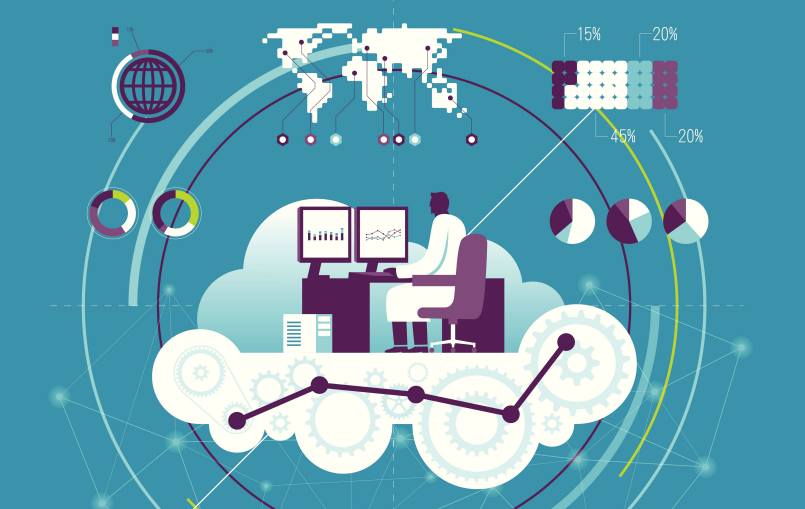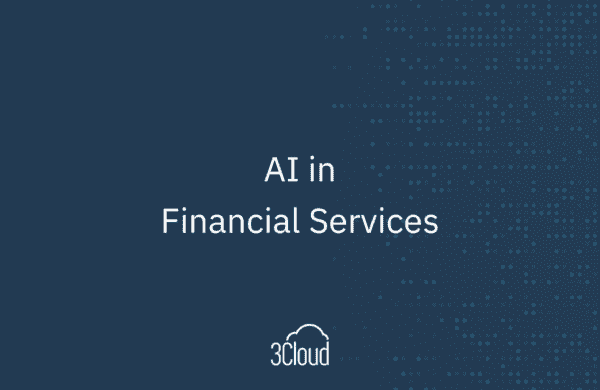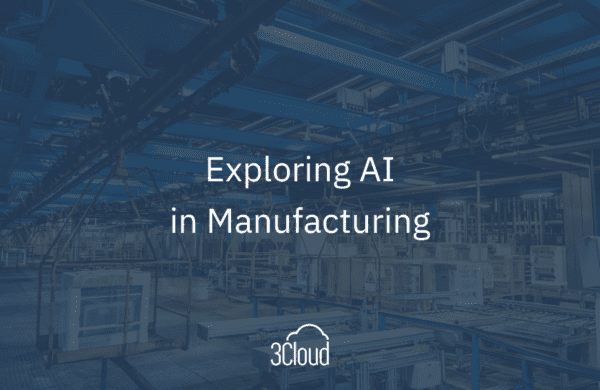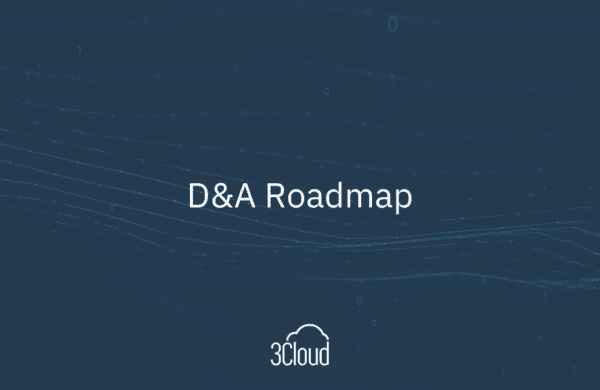Cloud Scale Analytics – these three words carry a lot of individual weight these days, and taken together, they offer insight into capabilities that I project will have a major business impact in 2019. Let’s take a closer look.
First, the break-down:
Cloud – Operating Expense (OpEx) model versus Capital Expense (CapEx); ease of provisioning; ease of deployment; modernization of available services; speed of iterations and pace of change
Scale – Across all major analytics workloads: storage, processing and compute, and serving; scale of access/deployment; and availability
Analytics – BI modeling; data visualization; machine learning/data mining; artificial intelligence and cognitive analytics
Most of these topics could be the subject of their own article, (or perhaps their own book!) such is the impact of the technological forces collectively labeled “Cloud Scale Analytics”. In this post, I’ll break down one way of looking at these terms and explain why any business leader not actively developing or executing plans that heavily leverage Cloud-Scale Analytics in 2019 should head back to the drawing board, ASAP!
Next, the build-up:
Cloud – By this point, anyone who isn’t proactively technology averse has been subjected to the cloud pitch. Whether it’s Microsoft Azure, AWS, or some other provider, cloud has been to the technology landscape what sliced-bread apparently was to the baking industry (I wasn’t there, but I’ve heard). That is to say, a literal and figurative game-changer.
The physical world of Information Technology has changed. The purchasing cycle of IT assets, both hardware and software, has changed. The legal landscape of IT has changed. And the definition of the user base has changed. If it needed to be summarized quickly, I think the No. 1 outcome of the cloud paradigm shift is accessibility. The cloud has made access to IT capabilities easier and cheaper, and it has enabled a model that allows those leveraging these capabilities to more seamlessly stay on top of the innovation wave.
Gone are the days of the multiyear CapEx hardware and software cycles (well, maybe not quite gone; check out some of SQL Server 2019’s industry-leading offerings here), as well as the cadence of adoption that left many organizations standardized on a platform that was not just potentially several years old – but in many cases several versions old – in a time when even the most recent version available could be a year (or more) out of date. Looking at you, Office 2010! Say hello to the cloud era, where an OpEx model partners with a software release cycle and the cloud-hardware paradigm to enable a potentially near real-time cadence of new capabilities and opportunities.
Cloud Scale – Piggy-backing upon that aforementioned model/cycle/paradigm, we can not only increase the speed at which new capabilities are delivered to our business, but we can, often with the click of a button, increase the scale at which we deploy those capabilities. Need to add more users? Click – done; the bill goes up next month. Need to increase storage capacity? Click – done; the bill goes up next month. Need to quintuple processing power for the next day (or three, but then scale it back down)? Click – (OK, maybe a couple clicks) done; the bill goes up next month (and then back down if this event doesn’t recur) and somewhere, a datacenter goes up a couple degrees of heat.
You get the picture; the cloud model allows not just the ease of access to new IT capabilities, but also the ability to scale the volume at which you consume those capabilities to match your usage needs. As someone who has provided ‘server sizing recommendations’ for projects in a past life, I cannot overstate the value here!
This means that the scale of the impact of a new technological capability is no longer limited to the scale of the expected user base and concurrency (which, in turn, had limited the scale of resource sizing); the scale of adoption is now easier than ever to adjust with the click of a mouse, and indeed, is increasingly automated to provide elasticity. The scale of the resources powering a solution can be reactive to the scale of the active/concurrent user base, and that means that everyone can be invited to this party.
Cloud Scale Analytics – Finally, let’s zero in on what these words mean together. If we move past the core IT services that underpin all of this – to wit, storage, processing and compute (and serving, to the end users) – with either Data or Analytics as the focus, we arrive at a more refined set of capabilities that belong under this term:
- Data Lakes (itself comprised of scalable storage for Structured Data, Unstructured Data, Semi-structured Data, Streaming Data)
- Analytical Modeling capabilities (that can aggregate and query billions of rows of data with scalable compute)
- Interactive Visualizations, and the ability to train and process Machine Learning models over multithreaded, distributed compute clusters
That last one has given rise to accessible Cognitive Analytics (think analytics that mimic human cognition, e.g., capabilities of the human brain like vision, hearing/speech, conceptual abstraction, etc.), which in turn lights up Artificial Intelligence in a practical and available manner. And then I think we finally have it: a working definition of the key term used in the title! Glad that was easy.
And finally, the pay-off:
With this newly established context, let’s take a stab at answering the initial question:
Will 2019 be the year of Cloud Scale Analytics?
In a word, “Yes!”
But of course, it’s not so simple. For the purposes of this next section, we could modify the question a little bit:
Will 2019 be the year that the impact of Cloud Scale Analytics matches the hype?
Again, I think the answer is a strong “Yes!”
The respective ages of the Cloud and Big Data as industry buzz words are getting up there, and 2018 was overwhelmingly the “Year of AI”, at least to this observer. And now we roll all three together, add in tremendous advances in traditional data analysis and visualization tools like Power BI (complete with its game-changing deployment models), and the potential impact should be clear.
The backdrop: An increasingly digitized world capturing data about everything, via an explosion of connected devices and sensors and electronically recorded audio, video, and images. The scale of data generated (and captured) by our world.
The Cloud Impact: The cloud model has rewritten the rules of technology acquisition, and the pace of updates. The last few years have seen the maturation of cloud technology in terms of management and accessibility, which, combined with the gradual breakdown in resistance to what this paradigm represents, means that in 2019, adoption is no longer reserved for early adopters or bleeding-edge technology firms.
The Big Data impact: Changes to distributed storage and computing have dramatically increased our ability to capture, store, and process the tidal wave of data, complementing the continuously rising speed of traditional database functionality. Coupled with the cloud, Big Data technologies mean we can seamlessly scale each point of the equation to respond to the sheer volumes and varieties of data that are available.
The AI Impact: It’s hard to overstate the overall significance of AI to the modern organization; it has almost limitless potential to change and improve nearly every task, job, or process in the world today. And it is no accident that Artificial Intelligence has become one of the hottest topics in technology – the preceding Big Data and Cloud impacts have served to make something that was once science fiction into reality, and at an acquisition cost that guarantees wide-spread adoption! But we’re not talking about sentient computers; AI augments human abilities and can automate complex, repetitive actions that previously required a lot of ‘rinse & repeat’ time from workers.
Cognitive analytics allow basic computer automation to function over domains that deal in ‘analog’ inputs, regardless of complexity. That is, in the past, computers could add two numbers together effortlessly (whether that’s 1 + 1 or something too long to type out!), but completely fell flat when needing to identify whether an object presented was a living animal, or perhaps a baked good. With the rise of Cognitive Analytics, AI has improved the digital world’s ability to ingest, interpret, understand, and analyze the non-digital world, and by so doing, has fundamentally altered the ability of technology to improve almost any job or task.
In parting, 2019 is the year of Cloud Scale Analytics. Rarely before have we seen the timely coalescing of multiple, massive technology trends so complementary as this; and I’ve declined to dig into additional supporting trends like IoT (Internet of Things) and the digitization of our personal lives as consumers, which is in turn giving rise to both more data, as well as a greater appetite for data analysis!
There will be headwinds, surely. Two that we see impacting 2019 are the growth of regulation (from a variety of government and non-government bodies and agencies) and a degree of social pushback arising from amoral actors leveraging analytics and AI in less than ethical ways. Neither of these is likely strong enough to prevent the exponential growth of Cloud Scale Analytics in 2019. Neither of these should prevent it; however they do warrant the right level of attention be paid to the ethics of Big Data and AI, as well as proper diligence in observing compliance.
As a technologist and data aficionado, 2019 will be an exciting, potentially break-neck year. As a business leader and organizational culture (and efficiency) devotee, the possibilities are nearly breath-taking and certainly invigorating. Envision the possibilities. Validate the theories.Transform your business!
Want to know more about Cloud Scale Analytics? Contact us!





